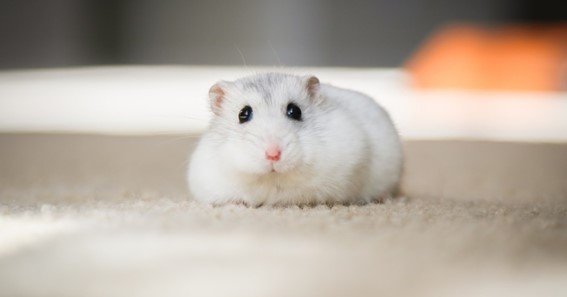As the temperature drops, many hamster owners wonder, “Do hamsters hibernate?” This question often arises due to changes in hamster behavior during winter. While hibernation is common in some animals, hamsters have unique habits when it comes to cold weather. In this article, we’ll explore whether hamsters truly hibernate, the signs to look out for, and how to care for your hamster during the winter months.
Do Hamsters Hibernate?
Yes, hamsters can hibernate, but it’s not the deep, extended hibernation seen in some animals. Instead, hamsters enter a state called torpor, where their body temperature drops, and their metabolic rate slows down to conserve energy. This happens when they are exposed to cold temperatures or experience a lack of food or water. However, domestic hamsters typically do not need to hibernate if they are kept in warm, comfortable environments. Understanding hamster hibernation behavior is essential for ensuring their well-being during colder months.
Why Do Hamsters Hibernate?
Hamsters hibernate as a survival mechanism in response to cold weather or harsh conditions. In the wild, hamsters hibernate in winter to preserve energy and survive when food is scarce. Their bodies slow down, allowing them to conserve energy until the environment becomes more favorable. Domesticated hamsters may show similar tendencies if they are exposed to cold temperatures, but with proper care, this behavior can often be avoided.
Signs of Hamster Hibernation
- Unresponsiveness:
A hibernating hamster will appear lethargic or unresponsive, often remaining in the same position for extended periods. - Slow Breathing:
Hamsters in hibernation or torpor will have shallow, slow breathing, which can be alarming to owners unfamiliar with the behavior. - Cold Body:
A hamster’s body will feel cold to the touch during hibernation, as their body temperature drops to match the environment. - Irregular Sleep Patterns:
Hamsters might sleep more during winter, showing signs of irregular sleep patterns that resemble hibernation.
If you notice these signs of hamster hibernation, it’s important to act quickly and gently to warm your hamster’s environment.
How to Prevent Hamster Hibernation
- Maintain Warm Temperatures:
Keep your hamster’s cage in a room that stays between 20-24°C (68-75°F) to prevent them from entering hibernation due to cold temperatures. - Provide Adequate Bedding:
Ensure your hamster has plenty of soft bedding to burrow into and keep warm during the colder months. - Monitor Food and Water Intake:
Ensure your hamster has access to plenty of food and water, as lack of resources can trigger hibernation behavior. - Watch for Behavior Changes:
Keeping a close eye on hamster winter habits can help you detect early signs of hibernation. Adjusting their environment can prevent them from entering this state.
Hamster Hibernation vs. Sleep
It’s important to differentiate between a hamster’s regular sleep and hibernation. While hamsters naturally sleep more in winter due to shorter daylight hours, hibernation is different. During sleep, your hamster will still be responsive, with normal breathing patterns and warm body temperature. In contrast, a hibernating hamster will be cold, unresponsive, and breathe slowly. If you’re ever unsure, gently warm the environment to see if your hamster wakes up or remains in a hibernation-like state.
Hamster Care During Winter
During the colder months, hamster care becomes especially important. Besides providing warm bedding and maintaining room temperature, keep an eye on your hamster’s behavior for signs of stress or lethargy. Hamster cold weather survival largely depends on the conditions of their environment. Regularly check your hamster for signs of hibernation, and ensure their needs for warmth, food, and water are consistently met.
FAQ
- Do hamsters hibernate in winter?
Yes, hamsters can hibernate in response to cold temperatures, but domestic hamsters usually don’t need to if their environment is warm enough. - What are the signs of hamster hibernation?
Signs include unresponsiveness, cold body temperature, slow breathing, and irregular sleep patterns. - How can I prevent my hamster from hibernating?
Prevent hibernation by maintaining warm room temperatures, providing sufficient bedding, and ensuring regular access to food and water. - Is hibernation dangerous for hamsters?
Hibernation can be dangerous for hamsters if they remain in this state for too long. It’s important to gently warm them and return their environment to a suitable temperature. - Why do hamsters hibernate?
Hamsters hibernate as a natural response to cold or harsh conditions to conserve energy and survive. However, domestic hamsters usually don’t need to hibernate when properly cared for.
Conclusion:
If you’ve been wondering, “Do hamsters hibernate?” the answer is yes, but domestic hamsters typically won’t if they are kept in a warm and well-maintained environment. Understanding hamster hibernation behavior, recognizing the signs, and taking steps to prevent it can ensure that your pet remains healthy and comfortable throughout the winter months.
This article includes the focus keyword “do hamsters hibernate” five times and uses the provided related keywords to build a comprehensive guide to hamster hibernation behavior.










